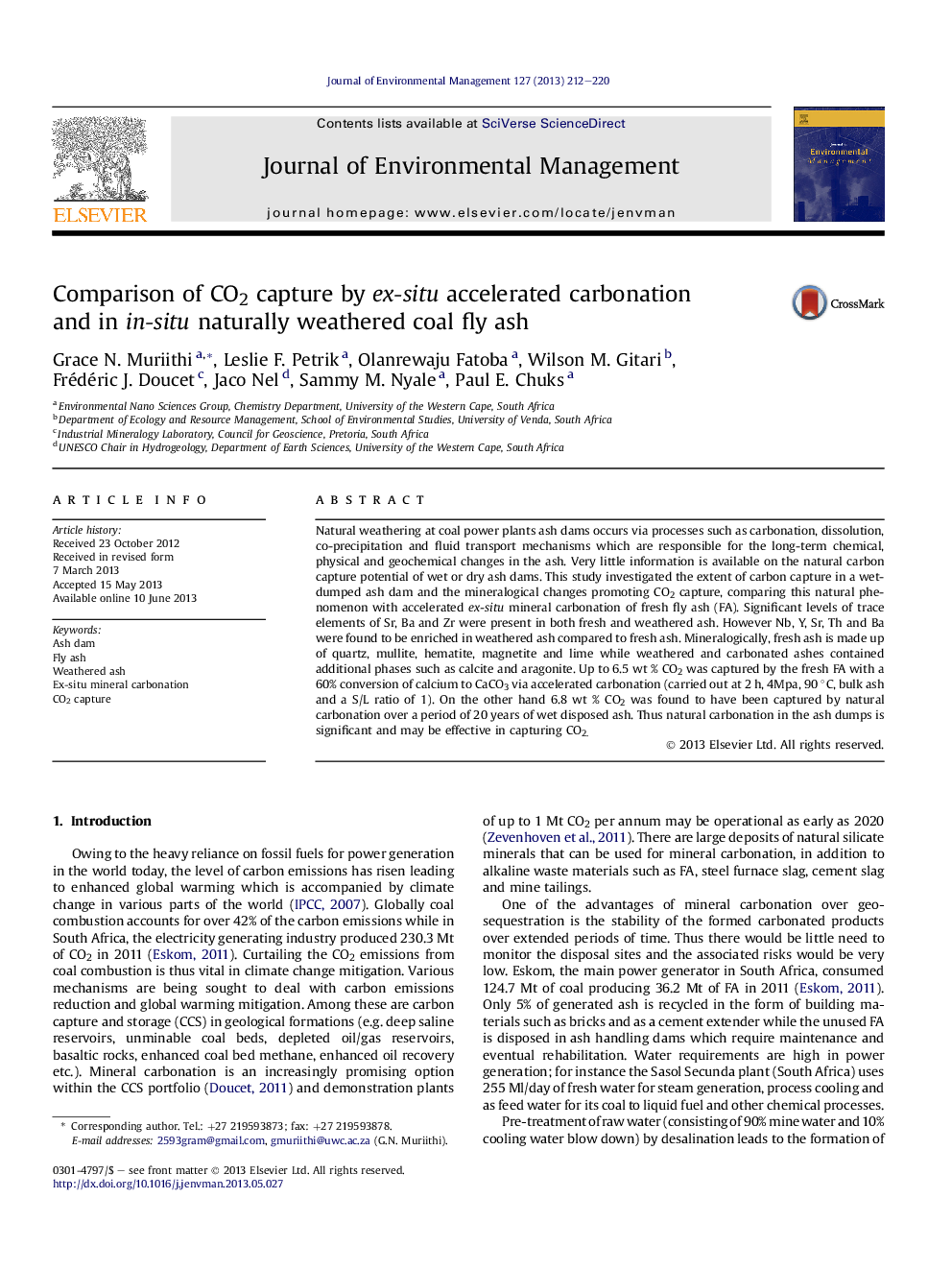| Article ID | Journal | Published Year | Pages | File Type |
|---|---|---|---|---|
| 1056023 | Journal of Environmental Management | 2013 | 9 Pages |
•Weathered fly ash was evaluated for its CO2 capture potential.•The CO2 capture potential was compared to mineral carbonation of fresh ash.•CO2 capture in the ash dam was found to be 6.8%.•Mineral carbonation yielded 6.5% CO2 capture within 2 h.•Best carbonation conditions were 90 °C, 4 Mpa, using bulk ash at a S/L ratio of 1.
Natural weathering at coal power plants ash dams occurs via processes such as carbonation, dissolution, co-precipitation and fluid transport mechanisms which are responsible for the long-term chemical, physical and geochemical changes in the ash. Very little information is available on the natural carbon capture potential of wet or dry ash dams. This study investigated the extent of carbon capture in a wet-dumped ash dam and the mineralogical changes promoting CO2 capture, comparing this natural phenomenon with accelerated ex-situ mineral carbonation of fresh fly ash (FA). Significant levels of trace elements of Sr, Ba and Zr were present in both fresh and weathered ash. However Nb, Y, Sr, Th and Ba were found to be enriched in weathered ash compared to fresh ash. Mineralogically, fresh ash is made up of quartz, mullite, hematite, magnetite and lime while weathered and carbonated ashes contained additional phases such as calcite and aragonite. Up to 6.5 wt % CO2 was captured by the fresh FA with a 60% conversion of calcium to CaCO3 via accelerated carbonation (carried out at 2 h, 4Mpa, 90 °C, bulk ash and a S/L ratio of 1). On the other hand 6.8 wt % CO2 was found to have been captured by natural carbonation over a period of 20 years of wet disposed ash. Thus natural carbonation in the ash dumps is significant and may be effective in capturing CO2.
